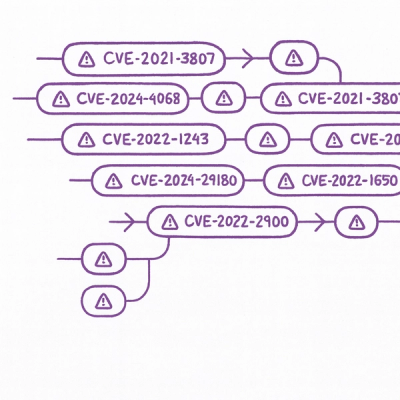
Security News
New Website “Is It Really FOSS?” Tracks Transparency in Open Source Distribution Models
A new site reviews software projects to reveal if they’re truly FOSS, making complex licensing and distribution models easy to understand.
Will be released soon (2017 June) after testing out in sample application.
EventSourcing describes current state as series of events that occurred in a system. Events hold all information that is needed to recreate current state. This method allows to achieve high volume of transactions, and enables efficient replication. Whereas reactive programming lets implement reactive systems in declarative style, decomposing logic into smaller, easier to understand components. The goal is to create reactive programming program interface, incorporating both principles. Applying reactive programming in event-sourcing systems enables modelling not only instantaneous events, but also have their history. Furthermore, it enables focus on the solvable problem, regardless of low level realization details. Reactive operators enable read model creation without exposing realization details of operations with data storage.
Add this line to your application's Gemfile:
gem 'frp-eventsourcing'
And then execute:
$ bundle
Or install it yourself as:
$ gem install frp-eventsourcing
Use provided task to generate a table to store events in your database.
rails generate frp_eventsourcing:migration
rake db:migrate
# Define events
AccountCreated = Class.new(FrpEventsourcing::Event)
MoneyDeposited = Class.new(FrpEventsourcing::Event)
MoneyWithdrawn = Class.new(FrpEventsourcing::Event)
Alternative definition:
class AccountCreated < FrpEventsourcing::Event; end
class MoneyDeposited < FrpEventsourcing::Event; end
class MoneyWithdrawn < FrpEventsourcing::Event; end
We can define stream that is creating read model once in our app. Keep in mind that no database operations are present here.
account_stream = FrpEventsourcing::Stream.new(AccountCreated, MoneyDeposited, MoneyWithdrawn).
as_persistent_type(Account, %i(account_id)).
init(-> (state) { state.balance = 0 }).
when(MoneyDeposited, -> (state, event) { state.balance += event[:data][:amount] }).
when(MoneyWithdrawn, -> (state, event) { state.balance -= event[:data][:amount] })
Instead of passing lambda directly, we can also use a variable to save and reuse lambda:
account_initial_state_change_function = -> (state) { state.balance = 0 }
or even use a class that implements call method. We can structure our code with some kind of denormalizer for example:
class Denormalizers::ReadModelType::InitialState::Account
def call(state)
state.balance = 0
end
end
We can create an account:
stream_name = "account"
event = AccountCreated.new(data: {
account_id: 'LT121000011101001000'
})
FrpEventsourcing::EventRepository.new.create(event, stream_name)
Transfer some money (100$ for example) to the account:
stream_name = "account"
event = MoneyDeposited.new(data: {
account_id: 'LT121000011101001000',
amount: 100
})
FrpEventsourcing::EventRepository.new.create(event, stream_name)
Withdraw some money (25$ for example) from the account:
stream_name = "account"
event = MoneyWithdrawn.new(data: {
account_id: 'LT121000011101001000',
amount: 25
})
FrpEventsourcing::EventRepository.new.create(event, stream_name)
Now we can query read model like:
account = Account.find_by(account_id: 'LT121000011101001000')
puts account.balance # prints 75
merge(another_stream) - merge one stream to another.filter(predicate_function) - if predicate function returns false, event won't get propogated through the chain any more.map(transform_function) - applies transformation function and propogates event through the chain.init(initial_state_change_function) - applies initial state change function for the first event.when(event_type, state_change_function) - if event matches event type, record is being created or loaded, state change function is being applied for the record and transition state saved to database.each(state_change_function) - same as when operator, just does not check event type and applies state change function for each event.Reactive operators were implemented using Observer design pattern, object oriented programming principles and introspection.
Transition state is being solved by applying metaprogramming (introspection, reflection) and using method chaining.
After checking out the repo, run bin/setup to install dependencies. Then, run rake spec to run the tests. You can also run bin/console for an interactive prompt that will allow you to experiment.
To install this gem onto your local machine, run bundle exec rake install. To release a new version, update the version number in version.rb, and then run bundle exec rake release, which will create a git tag for the version, push git commits and tags, and push the .gem file to rubygems.org.
Easy-medium difficulty:
Challenging:
FrpEventsourcing::EventRepositoryBug reports and pull requests are welcome on GitHub at https://github.com/ZilvinasKucinskas/FRP-EventSourcing.
git checkout -b my-new-feature)git commit -am 'Add some feature')git push origin my-new-feature)The gem is available as open source under the terms of the MIT License.
FAQs
Unknown package
We found that frp-eventsourcing demonstrated a not healthy version release cadence and project activity because the last version was released a year ago. It has 1 open source maintainer collaborating on the project.
Did you know?

Socket for GitHub automatically highlights issues in each pull request and monitors the health of all your open source dependencies. Discover the contents of your packages and block harmful activity before you install or update your dependencies.

Security News
A new site reviews software projects to reveal if they’re truly FOSS, making complex licensing and distribution models easy to understand.

Security News
Astral unveils pyx, a Python-native package registry in beta, designed to speed installs, enhance security, and integrate deeply with uv.

Security News
The Latio podcast explores how static and runtime reachability help teams prioritize exploitable vulnerabilities and streamline AppSec workflows.